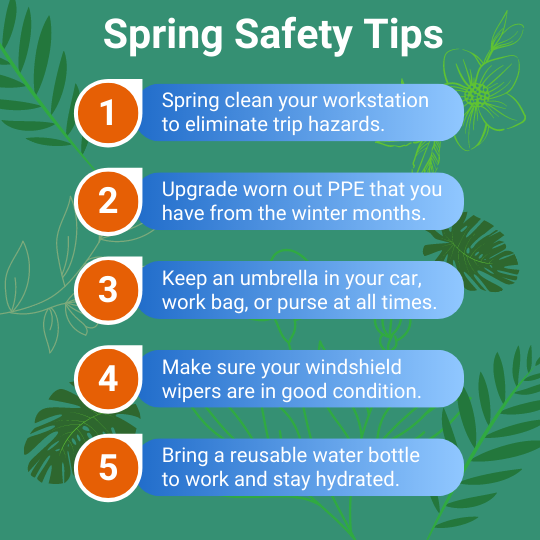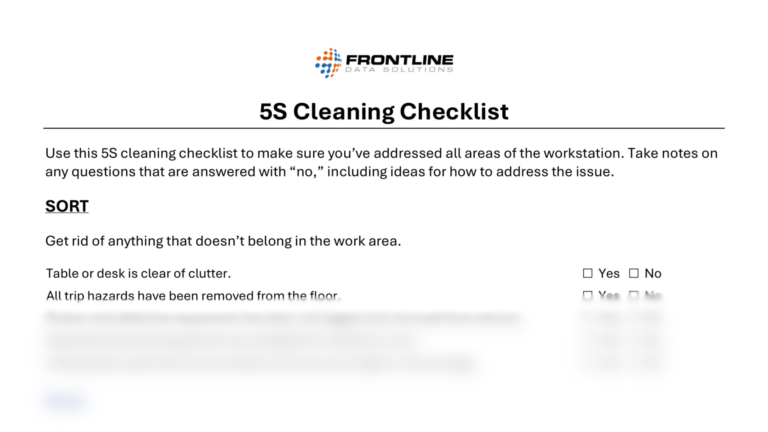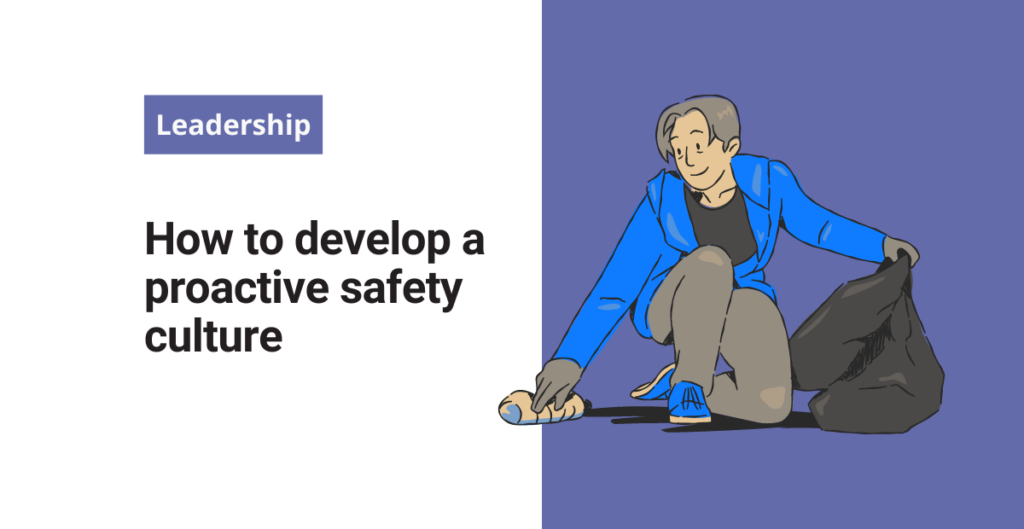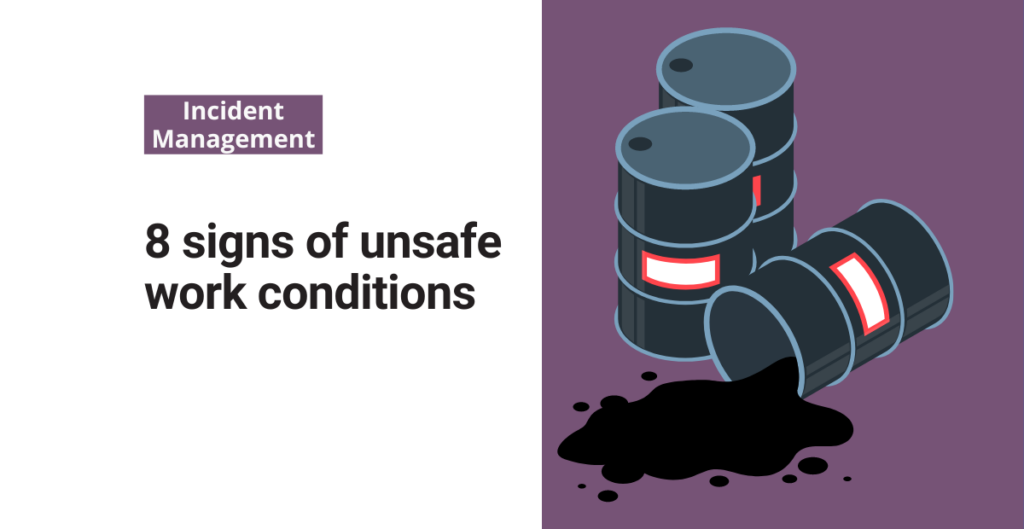While the dangers of winter weather fade away, spring offers a whole new set of hazards to look out for. Increased rainfall brings structural issues and slip hazards with it. Whether you or your employees work in the office, the field, or the comfort of home, you can benefit from these spring safety tips!
Share them on your company social media site or use them at your next standup meeting. While these tips are seasonal, safety is not. Little reminders can go a long way in preventing injuries.
[Check out our workplace safety tip collection for even more helpful tips, broken down by topic]
Free Checklist!
Download our free 5S cleaning checklist to use as a guide for your workplace spring cleaning efforts.
Spring Safety Tips for Employees
Here are 15 safety tips that you can share with workers as spring kicks into gear:
- Check the weather before leaving the house. You may encounter several types of weather in one day.
- Wear non-slip shoes to prevent slipping on wet floors.
- Keep an umbrella in your car, just like you would keep an ice scraper during the winter.
- Check the air pressure in your tires frequently. Temperature fluctuations in the spring can mess with the balance of all four tires and increase your chance of an accident.
- Always wear protective gloves even if it’s hot outside.
- Apply sunscreen before working in the sun.
- Stay hydrated throughout your shift by always having a reusable water bottle handy.
- Make sure that your windshield wipers are in working condition before heading to work.
- Keep all your required PPE in your vehicle or bag so that you never forget to bring it with you.
- Don’t forget to use handrails when climbing stairs, especially if your shoes are wet.
- Clean your workstation regularly to eliminate trip hazards.
- Avoid walking through the grass and dirt when possible. This interferes with the traction on your shoes and can cause a slip.
- When using a ladder, make sure that your shoes are as dry as you can get them.
- Always have an extra layer of clothing with you in case the temperature drops during your shift.
- Let safety leaders know about any hazards you come across while working.
The faster your team starts following these spring safety tips, the better chance they’ll have of protecting themselves against seasonal workplace hazards.

Ways for Leaders to Improve Safety
Get your facility ready for weather changes with these spring safety tips. And consider doing thorough, in-depth audits of each zone within the building to find hazards. For each hazard, come up with an action item that you can implement and track as spring progresses.
- Check the gutters in your facility. All downspouts should be facing away from the building’s foundation and provide a steady water flow. If the flow is uneven, you may need to clear a clogged gutter.
- Put out non-slip mats at each entrance. Make sure that they are secured and cover high-traffic walking paths.
- Secure all windows that you do not want opened. As the temperature rises, employees are more likely to try and open nearby windows.
- Check the seals at all loading and unloading doors. Secure loose seals so the rain doesn’t seep in and create slip hazards.
- Conduct a spring clean and promptly dispose of unused/broken equipment.
- Audit your warm weather PPE levels. Make sure you have the right gear for workers who will be outside.
- Review emergency plans for inclement weather. Check that all signage is up to date and that employees know what to do.
- Secure any outdoor items to make sure they won’t blow away in the wind.
- Trim overgrown branches that could cause a hazard in high winds. Tree limbs can cause structural damage to windows, the roof, siding, and more.
- Add fresh paint to your site’s parking lot, ensuring that all markings are easy to see. Pay special attention to crosswalks, intersections, and handicap spaces.
- Spray for common pests prior to increases in heat and rainfall.
- Audit building sidewalks for new cracks and trip hazards that have formed since the winter months.
- Ensure that heaters and/or fans are plugged in someplace that doesn’t create a trip hazard.
- Provide face masks to any workers who are dusting as part of your spring-cleaning protocol.
- Review your site’s 5S for any items that may have been relocated for the colder months. Move and mark any items that are moved for spring.
Following these spring safety tips will ultimately help your team avoid near misses and incidents, improve site productivity, and boost morale across the operation.




